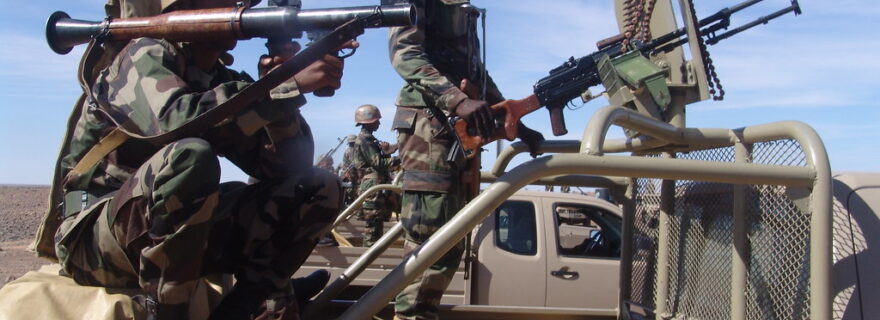Is al Qaeda in the Islamic Maghreb (AQIM) on a path of decline?
The drawing down of Operation Barkhane provides an opportunity for the reappraisal of counterterrorism efforts in the Sahel. Rather than just looking at ways of increasing the efficacy of military operations, a broader approach could integrate insights from literature on how terrorist groups end.
Currently few indications point to AQIM’s decline. On the contrary, over the past years the security situation in the Sahel has progressively worsened. Data from ACLED shows a large increase in violent incidents, more victims, and a spreading of insecurity from Mali into Niger, Burkina Faso and beyond.
In 2013, the French Operation Serval had successfully dislodged AQIM and its affiliates from northern Mali. Its successor, Operation Barkhane, certainly had tactical successes but did not manage to stem the spread of violence to the tri-border area between Mali, Burkina Faso and Niger. Perhaps the military approach actually added fuel to the flames, and jihadists are no longer alone in being responsible for mass atrocities: local security forces and militias are also guilty of numerous extrajudicial executions.
In June 2021 France decided to draw down Barkhane, reducing the number of troops in the Sahel. This could accelerate further if the Malian government contracts the Russian private security company Wagner to provide security. France, Germany and Estonia have already signalled that they could withdraw troops if the mercenaries are hired by the Malian government. It is therefore a good moment to analyse the perspectives for al Qaeda’s main affiliate in the Sahel, and the effect of counterterrorism policies on it.
A large part of literature on terrorism focuses on the origins rather than the end of the phenomenon. The limited number of works that do concentrate on its ending predominantly investigate individual ‘deradicalisation’, demobilisation or reintegration. Group-level desistance from terrorism is a separate topic for meso-level research, and a few quantitative studies have analyzed the demise of terrorist groups. A book by Audrey Kurth Cronin – ‘How Terrorism Ends’ - offers a practical framework for structuring insights on how AQIM could decline. Cronin identifies six different pathways for how terrorist groups generally end:
- Capture or killing the group’s leader (decapitation);
- Entry of the group into a legitimate political process (negotiation);
- Achievement of the group’s aims (success);
- Implosion or loss of the group’s public support (failure);
- Defeat and elimination by brute force (repression);
Transition from terrorism into other forms of violence (reorientation).
In applying this framework to AQIM, the distinction between terrorism and insurgency is important. Violent groups that conduct a strategy of insurgency actively contest the state’s rule, often offering an alternative form of governance. They aim to control the population and territory, and often attack security forces - although they sometimes also use terrorist tactics to coerce and intimidate. Groups that follow a terrorist strategy want to provoke political change, and if possible state overreaction. They target and terrorize civilians. The two strategies require different types of organisations (a large shadow governance structure versus a small clandestine group), and have a different relationship with the local population. The developments in the Sahel point to AQIM currently following a strategy of insurgency. This has an impact on the potential future pathways for AQIM, as follows.
The targeting of terrorist leaders (decapitation) has long been part of French counterterrorist policy. Many medium to high-level commanders have been captured or killed by French troops, and in June 2020 even the emir of AQIM, Abdelmalek Droukdel, was killed by French special forces. Recently, Al-Sahraoui, the overall commander of the Islamic State in the Greater Sahara (ISGS), was also killed. Nonetheless, the effect of leadership targeting on both organisations seems limited. After all, groups that conduct an insurgency and have a strong territorial presence can recruit much more easily than small groups conducting a strategy of terrorism.
On the topic of negotiations, the Sahelian states are keen to start a dialogue with JNIM/AQIM and several bottom-up ceasefires have been agreed. France, however, is opposed to talks with al Qaeda’s leadership. As for the pathway of implosion or loss of public support, violent infighting between AQIM and ISGS has significantly damaged both groups. The full potential of these pathways has not been fully explored, but the meagre results of the focus on repression and decapitation certainly makes it a worthwhile endeavour. AQIM and JNIM currently appear resilient and strongly implanted in much of the tri-border area, resisting pressure from ISGS and international security forces. This illusion of strength camouflages weaknesses, however, and it is worth bearing in mind that terrorist groups often carry the seeds of their own destruction. And that, sooner or later, all terrorist campaigns do come to an end.
For a more detailed analysis, see the new ICCT Research Paper: Pathways out of the Quagmire? Perspectives for Al Qaeda in the Sahel.
Sergei Boeke is a non-resident associate research fellow at the Institute of Security and Global Affairs.


